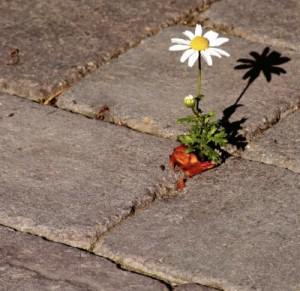 When a single species comes to dominate and ecosystem, whether it is a predator or a producer (i.e. plant), it tends to lose its adaptability. This can also be seen throughout human history. Economies that depend on a single commodity inevitably collapse. Consider the stock market decline roughly ten years ago. While not entirely technology heavy, the bubble that had developed around “dot com” stocks burst most spectacularly. In an ecosystem the concern is similar. A previously unknown susceptibility to disease can threaten to wipe out an entire population. If there is diversity in the plant and animal life, the ecosystem will be more resilient and more capable of dealing with disease, drought, and other potential changes.
When a single species comes to dominate and ecosystem, whether it is a predator or a producer (i.e. plant), it tends to lose its adaptability. This can also be seen throughout human history. Economies that depend on a single commodity inevitably collapse. Consider the stock market decline roughly ten years ago. While not entirely technology heavy, the bubble that had developed around “dot com” stocks burst most spectacularly. In an ecosystem the concern is similar. A previously unknown susceptibility to disease can threaten to wipe out an entire population. If there is diversity in the plant and animal life, the ecosystem will be more resilient and more capable of dealing with disease, drought, and other potential changes.
Large fields that rely on one crop will be at greater risk of failure, a la the Irish Potato Famine. Biodiversity is essential to protecting crops. Diversity in general, whether it be of opinions or species, helps further the goals of sustainability. One of the arguments against genetically modified organisms is that they decrease biodiversity. This can be seen in the proliferation of modified strains of corn and soybeans. Many heirloom varieties (not just tomatoes) have become increasingly popular and more widely available for the past few years. Companies like Baker Creek Heirloom Seeds help gardeners access these traditional varieties. The founder, who was recently interviewed on NPR, grew up on a farm, reading seed catalogs instead of comic books.
Varieties of species that have withstood a changing climate and a host of competitors offer a case study in resilience. Being adaptable and resourceful represent the ideal situation to ensure sustainability. Those species, companies, or individuals that are unable to change with the shifting winds will not survive in the long term. This is not to say a company that makes a single product cannot survive. If that company generates pollution or consumes non-renewable resources, and is unable to alter their practices, they will struggle to survive. However, if that company is able to find a way to produce their products without negative externalities, it will succeed in a sustainable fashion. One of the shining examples is Interface, run by the late Ray Anderson. He took a business model that was wasteful and turned it into one that reduced waste and increased market share and long term revenue through innovative practices like reclaiming old carpet tiles instead of throwing them away.
[Image source]

